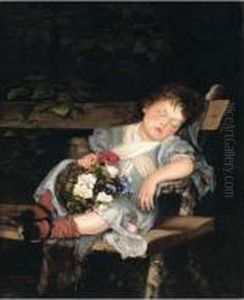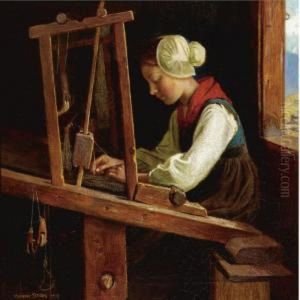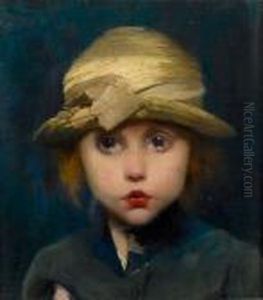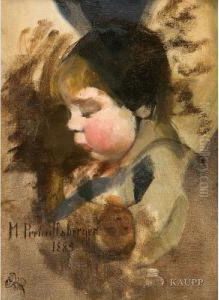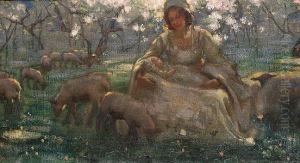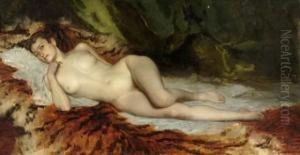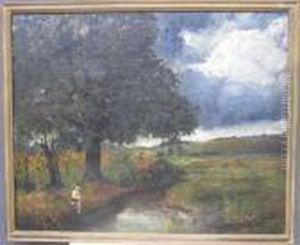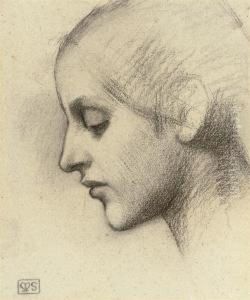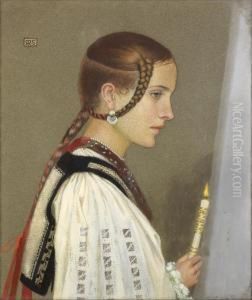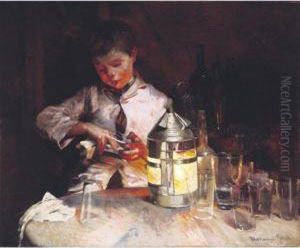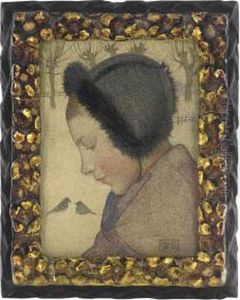Marianne Stokes Paintings
Marianne Stokes, born Marianne Preindlsberger in 1855 in Graz, Austria, was a significant figure in the British Arts and Crafts movement. She embarked on her artistic journey at an early age, showing exceptional talent and passion for painting. Determined to pursue her art, she moved to Munich, a vibrant artistic hub at the time, to study. It was there she met and later married Adrian Stokes, a British landscape painter, in 1884. The couple became an integral part of the Newlyn School, a colony of artists known for their realist and en plein air works, situated in Cornwall, England.
Marianne's artistry was heavily influenced by her travels and the various artistic movements she encountered. After her marriage, she and Adrian traveled extensively across Europe, including visits to Hungary and Croatia, where she was deeply influenced by the local folk culture and traditions. This exposure is evident in her work, which often incorporated themes and stylistic elements from the regions she visited.
Stokes's oeuvre is noted for its versatility, spanning from portraits and landscapes to religious and allegorical themes, showcasing a remarkable adaptability and depth in her approach to subjects. Her work was recognized for its meticulous attention to detail, vibrant use of color, and the emotional depth she brought to her scenes. She was particularly adept at capturing the essence of her subjects, imbuing them with a sense of dignity and grace that transcended their immediate context.
In the latter part of her career, Marianne Stokes turned towards more spiritual and religious themes, influenced by the Pre-Raphaelite Brotherhood's ideals and the broader Arts and Crafts movement's emphasis on craftsmanship and beauty. Her paintings from this period are characterized by their serene beauty, intricate detailing, and the use of symbols to convey deeper meanings.
Marianne Stokes's contribution to the Arts and Crafts movement and British art is significant, yet her work has often been overshadowed by her contemporaries. Despite this, she remains a respected figure among art historians and enthusiasts for her unique blend of realism, folklore, and spirituality. She passed away in 1927, leaving behind a legacy of artistic excellence and a body of work that continues to inspire and captivate audiences.
